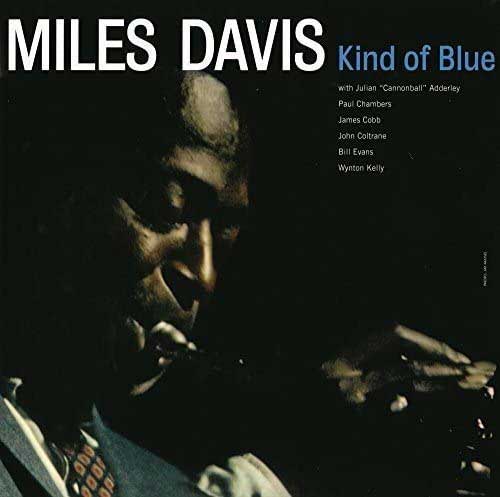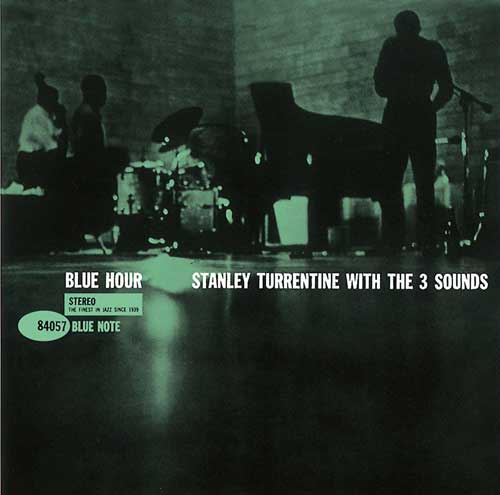“Staying home” continuously, I have just wanted to feel a bit “blue” by listening to music—not the languorous feeling but close to a sense of melancholy in everyone’s mind. For some reason, it gives us a piece of mind. I’d like to enjoy the various expressions of “blue” with superb sounds.
#130 Listening to Gershwin’s Representative Concert Numbers Marvelously Performed by Bernstein

Rhapsody in Blue
(Sony Music SICC-30318)
This is the work for concerts by a composer representing America in 20th century, George Gershwin, requested by Paul Whiteman’s orchestra, incorporating the elements of blues and jazz. As the title shows, it is the masterpiece which flows freely, fantastically and passionately. Ferde Grofe is the one who wrote the arrangement for the orchestra, and it has performed not only in the world of classical music but also has been freely interpreted and performed in various ways.
Personally, I feel deeply attached to the recorded version of 1959, where Leonard Bernstein is conducting the Columbia Symphony Orchestra and is also playing the piano. He was forty at that time. He just took the position of the Music Director of the prestigious New York Philharmonic, and his vivid expression is so fascinating. The album jacket shows the picture of him waving a baton briskly, but he is actually conducting and playing the piano at the same time. Bernstein also recorded “Rhapsody in Blue” in ’82, but both the orchestra and the piano sound more vibrant on this version. Since CBS America started the stereo recording full-fledgedly approximately one year before that, it is the stereo recording of early years. However, the presence of sound is great maybe because of the remastering effect. I still would like to recommend this version first if you want to listen to “Rhapsody in Blue.”
#131 Listening to Super-masterpieces of Miles on Monaural LP Once Again

Kind of Blue / Miles Davis (Monaural LP)
(Sony Music SIJP-1019)
I’d like to listen to the super-masterpieces, which have continuously been at the top of the rank over 60 years among many jazz albums, on LP again. “Jazz・analog・Legendary ・Collection”—the series of major masterpieces reissued and released as close to the original version as possible—Sony Music started from last autumn, and I have engaged in planning as a supervising member. While it is stated “faithfully reproducing the original version,” we have also thought how we could acoustically appeal to the people of today at the same time balancing in a sense contradictory elements. The original master tape , which had been strictly kept in the warehouse of Sony Music in America and had never been allowed to be lent out, was remastered by Mark Wilder, the engineer who won the Grammy Awards six times.
The album jacket restored the taste of the original version including the touch and the texture. Furthermore, in order for listeners to feel the atmosphere at that time, two types of discs, monaural and stereo, are released. 1958, the year “Kind of Blue” was released is the time that stereo players just started to come onto the market. Although some wealthy people might have been able to buy one, the people in general still couldn’t afford it. So the most of the record discs were still monaural. The broadly spreading sounds generated by the stereo disc are absolutely fantastic but I prefer to listen to the sound on the monaural disc, which is rather rare these days. I feel some kind of excitement listening to the sound of all the solo performances by Miles, John Coltrane, Cannonball Adderley and Bill Evans coming out from the center of the speaker. I’d like you to enjoy after all these years Miles’ masterpieces, which are mentioned as “the first complete form of Modal Jazz,” with the monaural sound of the good old days.
#132 Burt Bacharach’s New Album Bringing Back Nostalgia with A Little Sorrow

Blue Umbrella / Burt Bacharach & Daniel Tashian
(Sony Music SICX-30088)
The new album Burt Bacharach released after 15 years is the joint work with Daniel Tashian, a song writer who produced Kacey Musgraves’ Grammy-winning album in 2019. Burt drew attention to Daniel’s lyrics, met him, and went along with producing a work together. The arrangement of songs Daniel sings are all done by Burt. Bacharach’s melody became very popular in ‘60s. Harmony and delicate rhythm with tender melody lines and gentle beauty—Bacharach’s sound continuously making us relax and calm down our emotions still fascinates us. <Blue Umbrella> is the title number starts with a man looking at the pouring rain recalling his romantic past—“I wonder are you still under the same blue umbrella.
Do you still wear the same coat living your life your own way?”—and time passes quietly. While feeling of a little sorrow through the album brings us back the nostalgia, the perfect creation of sound rather touches our heart with flesh timbres. Burt Bacharach is now 92; however, Bacharach Magic in the past still remains and he shows no signs of aging. It was released in Japan in October, 2020, containing five numbers originally streamed and two additional numbers composed amid the peril of COVID-19.
#133 Favorite Stanley Turrentine’s Album Filled with Bluesy Mood

Blue Hour / Stanley Turrentine with The 3 Sounds
(Blue Note ⇒ Universal Music UCCQ-9149)
The album was recorded for the Blue Note label by Stanley Turrentine, the tenner saxophonist full of bluesy feelings and the “Three Sounds” led by the pianist, Gene Harris, performing together in 1960. The superb feelings of blues are expressed in mostly slow tracks with lower tempos such as <I Want A Little Girl>, <Gee Baby, Ain't I Good to You> and <Willow Weep for Me>.
Stanley plays balancing earthiness and sophistication. Later, Stanley has made fusion hits and has become popular, but I prefer this performance full of emotions.
About the Author

Masamichi Okazaki
Surrounded by various kinds of music from his childhood, Masamichi Okazaki joined Waseda University Modern Jazz Club. He started contributing articles to music magazines when he was a student. He covers wide range of music not only trad, modern and contemporary jazz, but also from pops to classics. He writes liner notes for CDs and LPs, and is a regular contributor to “JAZZ JAPAN,” “STEREO,” and others. He joined a big band, “Shiny Stockings,” as a saxophone player. He is a director of The Music Pen Club Japan (MPCJ).

